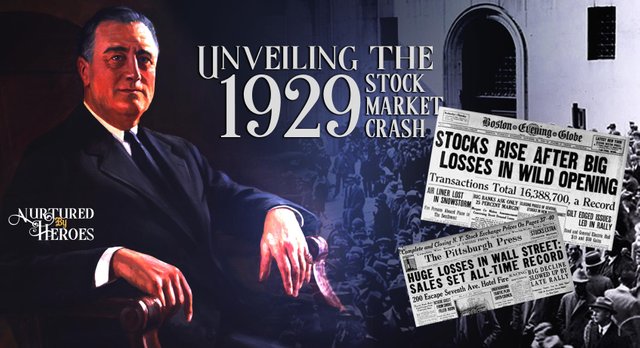The Stock Market Crash of 1929 stands as a harrowing reminder of the volatility and consequences of unchecked speculation. On October 29, 1929, known as "Black Tuesday," the New York Stock Exchange witnessed a catastrophic event as investors traded a staggering 16 million shares in a single day. What ensued was a financial cataclysm that reverberated throughout the world, plunging economies into the abyss of the Great Depression.

Causes of the Crash:
The 1920s, often dubbed the Roaring Twenties, were a period of exuberant economic growth in the United States. However, beneath the façade of prosperity lay a precarious foundation built on speculation, excessive debt, and inflated stock prices. The stock market had become a playground for rampant speculation, with investors trading on borrowed money, unaware of the looming bubble about to burst.
Various factors contributed to the crash. Low wages, coupled with a struggling agricultural sector, left vast segments of the population financially vulnerable. Additionally, the proliferation of debt and an excess of large bank loans further exacerbated the fragility of the market.
The Unraveling:
The signs of trouble began to manifest in September and early October of 1929 when stock prices started their descent. On October 18, a significant drop in prices marked the beginning of the end. Panic gripped the market, leading to Black Thursday, where a record number of shares were traded. Attempts to stabilize the market proved futile, culminating in the unprecedented chaos of Black Monday and Black Tuesday.
The Great Depression:
The aftermath of the crash plunged the United States and the world into the depths of the Great Depression. While there was some initial recovery, the overall trajectory was downward. By 1932, stock values had plummeted to a mere fraction of their peak, and the economy was in shambles.
The Great Depression was not merely an economic downturn; it was a humanitarian crisis. Nearly half of America's banks failed, leaving millions unemployed and destitute. African Americans and women were disproportionately affected, with unemployment rates soaring to unprecedented levels.
The Dust Bowl compounded the misery, driving scores of families from their homes in search of a better life. The economic despair also catalyzed significant societal changes, including the end of Prohibition, as policymakers sought solutions to alleviate suffering and stimulate economic activity.
The Road to Recovery:
The road to recovery was long and arduous. President Franklin D. Roosevelt's New Deal programs aimed to provide relief and implement reforms to address the root causes of the crisis. While these measures helped mitigate some of the worst effects of the Great Depression, it wasn't until the onset of World War II that the U.S. economy experienced a significant turnaround.
In conclusion, the Stock Market Crash of 1929 serves as a stark reminder of the perils of unchecked speculation and the devastating consequences of economic collapse. Its legacy continues to resonate, underscoring the importance of prudent financial regulation and the need for robust measures to safeguard against future crises. As we reflect on this pivotal moment in history, may it serve as a testament to the resilience of the human spirit in the face of adversity.